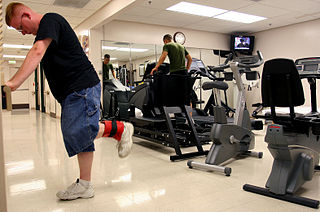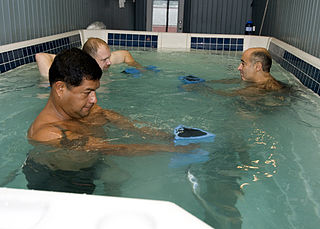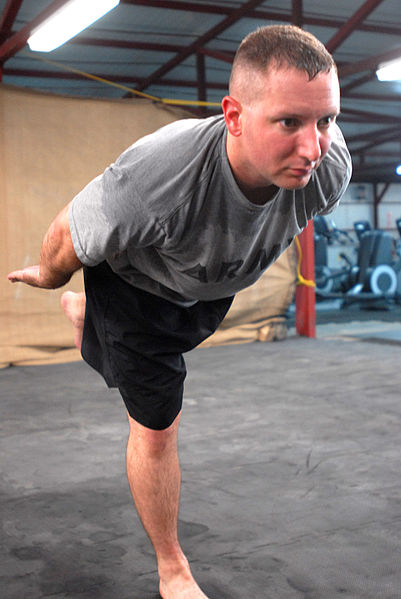Enhance your health with free online physiotherapy exercise lessons and videos about various disease and health condition
Physiotherapy Exercises
Physiotherapy exercises can improve the ability to use parts of the body that have been affected by disease or injury. Exercising daily plays a crucial role in the process of healing and recovering from injury or disease.
Mentioned below are most important physiotherapy exercises performed in various disease and injury conditions.
Active & passive exercises
Range of motion exercises are also called "ROM" exercises. These physiotherapy exercises are done to keep from losing muscle strength or to increase it. There are 4 levels of ROM exercises.
- 1. Active ROM exercises are when you do the exercises yourself.
- 2. Active-assisted ROM exercises are done by you and a helper.
- 3. Passive ROM exercises are when you cannot do the exercises by yourself or need someone to help you.
- 4. Resistive ROM exercises are when you are actively performing the exercises and you have someone resist the movement you are performing.
Active exercise is an exercise in which the patient exerts force to complete an action, e.g. standing up from bed. The Physiotherapist is typically a supervisor and provides little to no assistance to the patient unless a problem arises, i.e. fall.
Passive exercise is an exercise in which the Physiotherapist exerts force on the patient to complete an action, e.g. assisted range of motion (ROM) exercises. the Physiotherapist is physically moving a client's body to prevent thrombosis, atrophy, etc. This is typical in -paresis or -plegia patients.
Resisted exercises

Resistance exercise is also known as strength training, and it is performed to increase the strength and mass of muscles, bone strength and metabolism. It is important for you to gain sufficient muscle strength, because it can help you perform daily activities with ease. Resistance exercise stimulates the development of small proteins in muscle cells, which will in turn enhance your muscles' ability to generate force.
There are basically three different ways to do resistance exercises, and they are weight machines, free weights and calisthenics. When you are using weight machines, you can choose the weight you want to lift by adding or removing plates, but your movements will be dictated by the machines you use. On the other hand, free weights allow you to determine and control the position of your body when you are lifting weights. Calisthenics are performed without the use of weights, and they include physiotherapy exercises such as push ups, sit ups and chin ups. In these physiotherapy exercises, your body weight acts as the resistance force.
Joint mobilisation techniques
Joint mobilization is a treatment technique used to manage musculoskeletal dysfunction. Most manipulative and mobilization techniques are performed by physical therapists, and fall under the category of manual therapy.
Mobilizations are used to restore joint play that has been lost due to injury or disease. In order for an individual to kick his leg out, there must be sufficient joint play, or freedom for the tibia to move on the femur.
Mobilizations and manipulations should not be done in the following circumstances:
- to the spine if there is severe osteoarthritis or osteoporosis
- if there is any tumor or malignancy in the area
- to the cervical region if there is dysfunction with the flow of blood within the vertebral artery
- if there is bleeding in a joint
- if there is a loose body in the joint
- to total joint replacements
- to joints near a growth plate
- if the joint is degenerative
- until a full diagnosis is reached
Suspension therapy
Suspension training is a tool that uses body weight and gravity to challenge the neuromuscular system in ways conventional exercises are unable to accomplish. The suspension trainer provides an alternative to working out with an exercise machine. The system-which uses a device that hangs from the ceiling-was developed by Navy Seals.
All exercises are performed standing or in suspension, thus increasing stabilizing musculature and posture, integrating multi-joint physiotherapy exercises for enhanced coordination and neuromuscular recruitment.
Suspension training begins with an upside-down, Y-shaped strap system hanging securely overhead. Exercises involve the user holding on with one or two hands or feet with one or two limbs contacting the ground. The user must always be in contact with the ground, except when performing more advanced plyometric physiotherapy exercises.
Relaxation techniques
Planned relaxation calms anxiety and helps your body and mind recover from everyday rush and stress. Music, a long soak in the bath, or a walk in the park do the trick for some people, but for others it's not so easy. If you feel you need help with learning to relax, try a relaxation or meditation class. Your GP and local library will have information about these.
- Choose a quiet place where you won't be interrupted.
- Before you start, do a few gentle stretching exercises to relieve muscular tension.
- Make yourself comfortable, either sitting or lying down.
- Start to breathe slowly and deeply, in a calm and effortless way.
- Gently tense, then relax, each part of your body, starting with your feet and working your way up to your face and head.
- As you focus on each area, think of warmth, heaviness and relaxation.
- Push any distracting thoughts to the back of your mind; imagine them floating away.
- Don't try to relax; simply let go of the tension in your muscles and allow them to become relaxed.
- Let your mind go empty. Some people find it helpful to visualise a calm, beautiful place such as a garden or meadow.
- Stay like this for about 20 minutes, then take some deep breaths and open your eyes, but stay sitting or lying for a few moments before you get up.
Contrast Method
- Pull your feet up towards you as hard as you can then relax them
- Point your toes away from you then relax them
- Either push your knees down into the pillow (if you are lying down) or push your feet down into the floor (if you are sitting down) then relax
- Tighten your buttocks then relax them
- Make a tight fist with both hands then relax them
- Stretch both hands out into star shapes then relax them
- Tighten the muscles around your elbows and either push down into the bed or onto the arms of the chair then relax them
- Pull your shoulders up towards your ears then relax them
- Push your head back into the pillow or head rest then relax
- Now your muscles are in a better state of relaxation. Stay in the position from your contrast method and begin to focus on your breathing. Try not to change your breathing pattern. With every breath in feel your chest rise, and with every breath out feel your chest fall. As your chest falls feel yourself sink slightly further into the chair or bed. Try to do this for at least 10 minutes.
Posture correction methods
Good posture is nothing more than keeping your body in alignment. What it looks like when standing is a straight back, squared shoulders, chin up, chest out, stomach in. If you can draw a straight line from your earlobe through your shoulder, hip, knee, to the middle of your ankle.
The spine has two natural curves that you need to maintain called the 'double C' or 'S' curves, these are the curves found from the base of your head to your shoulders and the curve from the upper back to the base of the spine. When standing straight up, make sure that your weight is evenly distributed on your feet. You might feel like you are leaning forward, and look stupid, but you don't.
- Physiotherapy exercises that strengthen the muscles across your upper back and shoulders will help you maintain good posture.
- Practice yoga
- Proper standing posture is about alignment and balance. It also lends an air of confidence. Here are some tips for achieving the correct upright posture:
- Place your feet about shoulder width apart—the same stance you would use for working out or many other physical activities.
- Stand up straight. This is, of course, the key to good standing posture, and bears repeating. As you develop good posture habits, this will become second nature.
- Keep your weight on the balls of your feet. Keep your shoulders squared. It may feel unnatural at first, if you have not developed good posture habits. Like standing up straight, however, this will become second nature. Pull your head back and up.
- Walking with good postures is simply an extension of standing with good posture. Keep your head up, shoulders back, chest out, and eyes looking straight ahead.
- Avoid pushing your head forward.
- Sit up straight. If you work long hours at a desk, and have the option, use a chair that's ergonomically designed for proper support, and designed for your height and weight. If this is not an option, try using a small pillow for lumbar support.
- Align your back with the back of the office chair. This will help you avoid slouching or leaning forward, which you may find yourself doing after sitting too long at your desk.
- As with standing posture, keep your shoulders straight and squared, your head is upright, and your neck, back, and heels are all aligned.
- Keep both feet on the ground or footrest (if your legs don't reach all the way to the ground).
- Adjust your chair and your position so that your arms are flexed, not straight out. Aim for roughly a 75- to 90-degree angle at the elbows. If they are too straight, you're too far back, and if they are more than 90 degrees, you're either sitting too close, or you're slouching. Even if you are using perfect posture while sitting in the best chair in the world, you need to stand up and stretch, walk around, do a little physiotherapy exercises or just stand there for a few minutes.
- When you're lifting something off the ground any heavier than your cat, always bend at the knees, not the waist. Your back muscles are not designed for that, but your large leg and stomach muscles are. Use them well.
Gait training & crutch walking
In its most general form, Gait training is the act of learning how to walk. However, the term is more often used in reference to a person learning how to walk again after injury or with a disability. Physiotherapists, generally help their patients with gait training.
Gait training can take a number of forms, but repetition of the actual motions performed during walking is the most important factor. Parallel bars may be used to help with gait training, especially in the early stages when a patient is first learning or re-learning to walk. They involve a person walking between two handrails to support themselves, often with the therapist either helping to support the patient or physically moving the patient's legs. Gait trainer or other gait aids are also utilized.
Hydrotherapy exercises

Hydrotherapy is the use of water to provide therapeutic effects. This is quite a wide ranging topic and can include treatments such as steam rooms and clonic hydrotherapy, but in this case we are referring to the use of water (in a hydrotherapy pool) to help with musculoskeletal and neural rehabilitation, as often used in physiotherapy exercises.
Proprioceptive neuromuscular facilitation technique
Proprioceptive Neuromuscular Facilitation (PNF) is a form of stretching in which a muscle is alternatingly stretched passively and contracted. The technique targets nerve receptors of a muscle to extend its length. This stretching procedure is designed for physical therapist and occupational therapist in the 1940s and 1950s to treat the patients of paralysis. It is usually a combination of passive stretching and isometric contraction. The PNF positions encourage flexibility and coordination in the limbs. It helps to quick gains in range of motion and specially used by atheletes to improve performance. PNF is an advanced form of flexibility training that involves both stretching and contraction of the muscle group being targeted.
Indications of PNF : -
- 1. Loss of range of motion.
- 2. Acute and chronic pain.
- 3. Muscle tightness.
- 4. Muscle cramp.
- 5. Loss of flexibility.
Breathing exercises
- Controlled breathing techniques
- Diaphragmatic breathing
- Segmental breathing
- Incentive spirometer technique
- Glossopharyngeal breathing
- Pursed lip breathing
- Paced breathing
Massage
Massage is the manipulating of superficial and deeper layers of muscle and connective tissue using various techniques, to enhance function, aid in the healing process, decrease muscle reflex activity, inhibits motor-neuron excitability and promote relaxation and well-being.
Massage involves working and acting on the body with pressure – structured, unstructured, stationary, or moving – tension, motion, or vibration, done manually or with mechanical aids. Target tissues may include muscles, tendons, ligaments, fascia, skin, joints, or other connective tissue, as well as lymphatic vessels, or organs of the gastrointestinal system. Massage can be applied with the hands, fingers, elbows, knees, forearm, and feet.
Individual, group & mass exercises
Group exercise is typically described as exercise performed by a group of individuals led by an instructor. A variety of group physiotherapy exercises formats exist, including (but not limited to) aerobics and dance choreographed to music, BOSU, core conditioning, Pilates, yoga, muscle conditioning, step, indoor cycling, kickboxing, sculpting, fall prevention and boot camp. Your choice of classes depends on the club or studio you attend, the expertise of the instructors, and the amount of time you have.
Group physiotherapy exercises offers a variety of benefits you might miss out on if you choose to work out on your own. Some of the benefits include exposure to a social and fun environment, a safe and effectively designed workout, a consistent exercise schedule, an accountability factor for participating in exercise, and a workout that requires no prior exercise knowledge or experience. Let’s take a look at how these benefits might apply to you.
Cardiopulmonary endurance exercises
Cardiovascular exercise, or aerobic exercise, is physical activity that can be performed for extended periods and uses major muscle groups. Aerobic exercise strengthens the heart and improves the body's ability to deliver oxygen to the muscles. There are many cardiovascular endurance exercises which can help with weight loss, muscle toning and improved heart health. The best way to stick with an aerobic program is to find types of physiotherapy exercises that you enjoy.
Motor coordination and skill exercises
Coordination is one element of movement that is important in sports and in day-to-day living. Coordination generally refers to moving two or more parts of your body at the same time to achieve a specific goal. That could mean turning a doorknob, performing dance steps or hitting a baseball with a bat. Adding certain physiotherapy exercises to your daily routine may improve your coordination overall.
Balance exercises

Loss of balance is common in certain medical conditions and the elderly. This can contribute to falls and difficulty walking. Balance and proprioception (joint position awareness) is important to improve your ability to regulate shifts in your body's centre of gravity while maintaining control. Balance exercises have been shown scientifically to prevent injury and are an important component of rehabilitation following lower limb injury. It is important to discuss the suitability of these exercises with your physiotherapist prior to commencing them.
Usually, balance physiotherapy exercises should be performed for 5 minutes per day initially and progressed to 10-15 minutes or longer provided they do not cause or increase symptoms. Generally you should select a range of physiotherapy exercises that challenge your balance without causing an increase in symptoms. Always set up your environment to ensure safety and prevent falls, in case you lose your balance (e.g. practice at a bench or with a spotter).
Stretching exercises
Read more about types of physical therapy exercises on verywellhealth
Stretching is a form of physiotherapy exercises in which a specific skeletal muscle (or muscle group) is deliberately stretched, often by abduction from the torso, in order to improve the muscle's felt elasticity and achieve comfortable muscle tone. The result is a feeling of increased muscle control, flexibility and range of motion. Stretching is also used therapeutically to alleviate cramps.
Return from Physiotherapy Exercises to home page
Return from Physiotherapy Exercises to Orthopedic Physiotherapy
Recent Articles
|
Author's Pick
Rating: 4.4 Votes: 252 |

